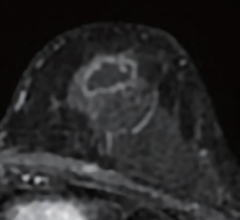
Justin Hernandez, MD
May 8, 2024 — Compared to males, women in radiology are at a consistently higher risk of not matching into diagnostic radiology programs, as are underrepresented minorities compared to their White counterparts, according to research presented at the 124th ARRS Annual Meeting.
“Our data indicate that there is a statistically significant difference in the relative risk of not matching into diagnostic radiology residency among different races and sexes,” wrote Justin Hernandez, MD, of California’s Loma Linda University Medical Center. “However, our data also suggests that these disparities are slowly decreasing over time.”
Armed with match data from the Accreditation Council for Graduate Medical Education, Hernandez et al. collected demographic information on diagnostic radiology residents over the past 7 years. To obtain a corresponding applicant pool, the Loma Linda team looked to the American Association of Medical Colleges’ website to analyze four years of Electronic Residency Application Service statistics. The researchers then compared race and gender composition of the applicant pool with resident enrollment to calculate relative risks of not matching for women and racial minorities.
Ultimately, across all years examined, women evidenced a higher relative risk of going unmatched than men, ranging from 1.02 in 2021–22 to 1.09 in 2015–16—p values being statistically significant for all years (except 2021–22). Furthermore, across all years again, underrepresented minorities showed a higher relative risk of going unmatched than White individuals. Specifically, the relative risk for Black individuals ranged from 1.33 in 2021–22 to 1.49 in 2015-16; for Hispanics, relative risk ranged from 1.19 in 2021–22 to 1.48 in 2015–16; for Asians, relative risk ranged from 1.04 in 2020–21 to 1.31 in 2015–16; and for Native Hawaiian or Pacific Islanders, relative risk ranged from 1.67 in 2015–16 to 1.76 in 2021–22.
“All p values were statistically significant, and the 95% confidence intervals for all relative risks did not overlap with 1.0, with the exception of Asian individuals in 2020–21,” Hernandez added.
For more information: www.arrs.org
Find more ARRS24 conference coverage here


 November 11, 2025
November 11, 2025 









